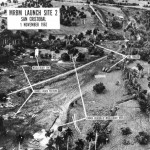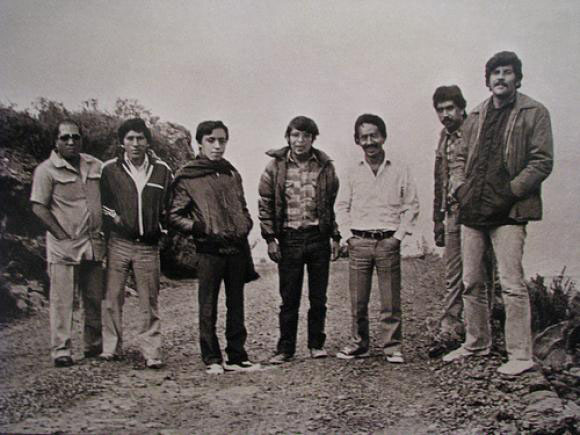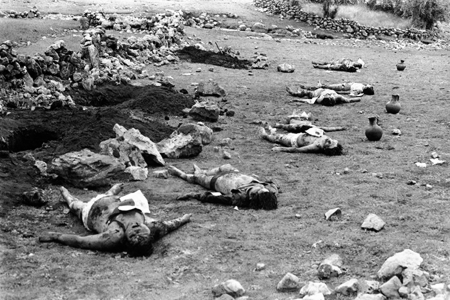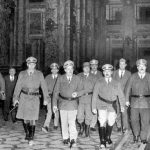 Justifying their actions in terms of the need to keep the peace and to prevent “another Cuba,” though often also falling into the pattern of violent repression that dates back to the colonial period, states increasingly resorted to force to put down incipient protest, armed or otherwise. Throughout the region, and mostly with the approval if not always the direct connivance of the United States, the military took centre stage, bringing down civilian governments and ushering in a reign of state violence and terror with the aim of securing social order and warding off the spectre of revolutionary change.
Justifying their actions in terms of the need to keep the peace and to prevent “another Cuba,” though often also falling into the pattern of violent repression that dates back to the colonial period, states increasingly resorted to force to put down incipient protest, armed or otherwise. Throughout the region, and mostly with the approval if not always the direct connivance of the United States, the military took centre stage, bringing down civilian governments and ushering in a reign of state violence and terror with the aim of securing social order and warding off the spectre of revolutionary change.
11. The Terror
Throughout the region, the military took centre stage, ushering in a reign of state violence and terror with the aim of securing social order and warding off the spectre of revolutionary change.
You should also watch the interview video with Max Cameron. Then there are the podcasts for this week, as well as student-made videos.
- Alexander Dawson, “The Terror”. Latin America Since Independence: A History with Primary Sources. 2nd Edition. New York: Routledge, 2014. 283-317.
Note that each chapter of the textbook comes with online resources on the publisher's website. Simply click on the relevant tab for this week's reading.
Documents:
- Mario Vargas Llosa, "The Massacre" (1983). (Dawson 303-306)
- "Interview of the Century" (1988). (Dawson 306-309; as "Interview with President Gonzalo"; Spanish original)
- Fujimori's Declaration of the Autogolpe (1992). (Dawson 310-314)
- Carolina Huamán Oyague, A Day in the Trial of the Century. (Dawson 315-316)
Leading the Terror
Peru’s Civil War
This conversation with Max Cameron (Political Science, UBC) looks at Peru’s civil war of the 1980s in the context of a failed land reform and the state’s abandonment of the highlands. It also discusses Alberto Fujimori’s regime, and the war’s legacy today.
“The Terror”
Sendero Luminoso: Terror in Peru
Mannat Advani, Ximena Kuzma Mongrut, Silas Latchem, Kito Romero, and Carolina Rueda:
“The Terror”
Camila Sol and Miles Zhang:
Sendero Luminoso
Emily Townsend and Piero Castillo:
The Dirty Wars
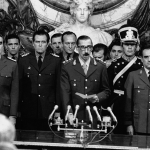
Alec Dawson (Professor, History and International Studies, Simon Fraser University), author of Latin America Since Independence: A History with Primary Sources, considers the context and reasons for the Dirty Wars that took place in many parts of Latin America between the 1970s and 1990s.
This podcast complements chapter nine of his textbook.
The Cold War
Alec Dawson (Professor, History and International Studies, Simon Fraser University), author of Latin America Since Independence: A History with Primary Sources, discusses US policy towards Latin America during the Cold War.
This podcast complements chapter nine of his textbook, “The Terror” (though it also goes equally well with chapter six, “Commerce, Coercion, and America’s Empire”).
Photos taken by journalists massacred in Uchuraccay:
Taken from “Por buscar la verdad, encontraron la muerte en Uchuraccay”
Full set of images, in colour, at http://www.uchuraccay.blogspot.ca/
- Feitlowitz, Marguerite. A Lexicon of Terror: Argentina and the Legacies of Torture. Oxford: Oxford University Press, 1999.
- Klein, Naomi. The Shock Doctrine: The Rise of Disaster Capitalism. Toronto: Knopf Canada, 2007.
- Menchú, Rigoberta. I, Rigoberta Menchú: An Indian Woman in Guatemala. Ed. Elisabeth Burgos-Debray. Trans. Ann Wright. London: Verso, 1984.
- Partnoy, Alicia. The Little School: Tales of Disappearance and Survival in Argentina. Trans. Alicia Partnoy with Lois Athey and Sandra Braunstein. San Francisco: Cleis Press, 1998.
- Virno, Paolo. “Do You Remember Counterrevolution?” Trans. Michael Hardt. In Paolo Virno and Michael Hardt (eds.), Radical Thought in Italy: A Potential Politics. Minneapolis: University of Minnesota Press, 1996. 240-259.
- Consider the practice of "forced disappearance." Why might it be especially painful and traumatic for relatives and friends of its victims?
- Why might some people in Chile, Argentina, El Salvador and so on have supported military or authoritarian regimes?
- How was the experience of armed violence in Peru different from that of other countries in Latin America? How was it similar?
- What are the justifications that Alberto Fujimori provides for his "autogolpe," suspending democratic institutions? Are they persuasive?
